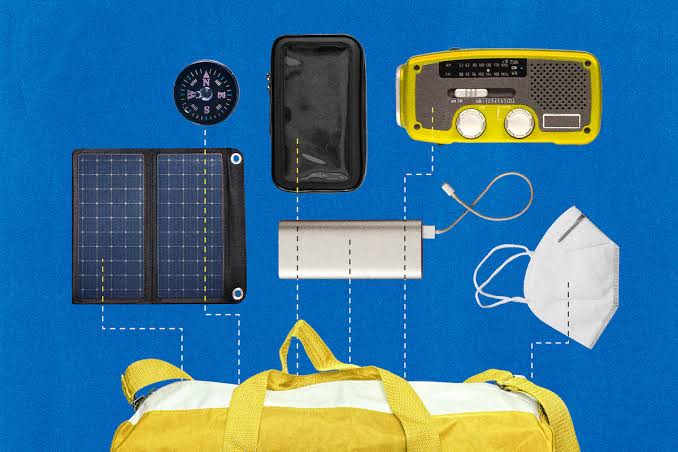Introduction to Smart Gadgets for Child Protection
Smart gadgets have evolved beyond entertainment and convenience, becoming vital tools in child safety. With advancements in artificial intelligence, GPS tracking, biometric authentication, and IoT connectivity, parents now have access to devices that help monitor, protect, and communicate with their children in real time. These gadgets aim to strike a balance between granting children independence and ensuring they remain safe in both physical and digital environments.
As technology progresses, the future promises even more intelligent, discreet, and reliable solutions that address both current and emerging safety concerns.
Current Landscape of Kids Safety Gadgets
Today, parents have access to various devices designed to keep children safe, including:
• GPS-enabled smartwatches for real-time location tracking
• Child-friendly smartphones with parental control apps
• Wearable panic buttons linked to guardian devices
• Home smart cameras with AI-based motion detection
• Apps for monitoring online activity and screen time
These tools provide peace of mind but are still evolving to meet growing challenges such as cyber risks, kidnapping threats, and environmental hazards.
Integration of Artificial Intelligence in Child Safety
Artificial intelligence is set to play a central role in the next generation of safety gadgets. AI will help in predictive analysis, identifying potential dangers before they escalate.
Examples of future AI-driven capabilities include:
• Predictive location alerts based on unusual movement patterns
• AI-powered voice recognition to detect distress in a child’s tone
• Smart wearables that monitor heart rate and stress levels for emergency alerts
• Machine learning algorithms that block harmful online content in real time
This shift toward proactive safety rather than reactive measures could redefine child protection standards.
Enhanced GPS Tracking and Geofencing
While GPS tracking is already common, the technology is becoming more precise and energy-efficient. Future devices will offer centimeter-level accuracy and operate effectively in urban high-rise areas and indoor locations.
Expected innovations include:
• Advanced geofencing that sends alerts when a child enters restricted zones
• Route optimization features to track safe school or play routes
• Integration with public safety networks for faster emergency response
• Offline tracking capability in low-signal areas through mesh networking
Such improvements will make location tracking more dependable, even in challenging environments.
Wearable Technology and Discreet Safety Devices
Wearable safety devices will become more discreet and child-friendly, blending into clothing, jewelry, or school accessories. This not only prevents children from feeling monitored but also makes the devices less noticeable to potential threats.
Potential future wearables include:
• Smart shoes with embedded trackers and panic sensors
• Clothing with temperature and air quality sensors for environmental safety
• AI-enabled smart glasses with instant parent communication
• Wristbands with biometric authentication to prevent misuse
The emphasis will be on comfort, design, and multifunctionality without compromising safety.
Cybersecurity and Digital Well-being for Kids
As children spend more time online, digital safety is becoming as important as physical safety. The future of kids’ gadgets will integrate advanced cybersecurity features to protect against online threats.
These may include:
• AI-driven parental control systems that adapt to browsing habits
• Secure encrypted communication between parents and children
• Automatic detection and blocking of cyberbullying attempts
• Built-in digital wellness tools to promote healthy screen time habits
This dual focus on physical and digital protection will help create a safer online experience for kids.
Emergency Response and Connected Ecosystems
The future of child safety gadgets will likely involve interconnected devices that work together within a smart ecosystem. This could mean linking a child’s wearable to smart home systems, school networks, and emergency services.
Possible features include:
• Automatic alerts to local authorities during emergencies
• Integration with public transport safety systems
• Drone-assisted search in case of missing child alerts
• Community-based safety networks where neighbors can respond quickly
Such an ecosystem would enable faster, coordinated responses in critical situations.
Ethical and Privacy Considerations
While smart gadgets for kids’ safety offer many benefits, they also raise concerns about privacy, over-surveillance, and data protection. Future solutions will need to address these issues through:
• Transparent data collection policies
• Secure data storage with parental control
• Age-appropriate consent models
• Balancing safety with a child’s right to independence
The challenge will be creating devices that protect children without infringing on their privacy or freedom.
Conclusion
The future of smart gadgets for kids’ safety is moving toward AI-powered, highly accurate, and discreet technologies that protect children both offline and online. As these tools become more advanced, they will integrate seamlessly into daily life, offering parents peace of mind while giving children the freedom to explore safely.
The key to success will be innovation that prioritizes trust, security, and ethical responsibility. With continued progress, the next decade could see child safety technology becoming as essential as seat belts and home alarms.




Interesting